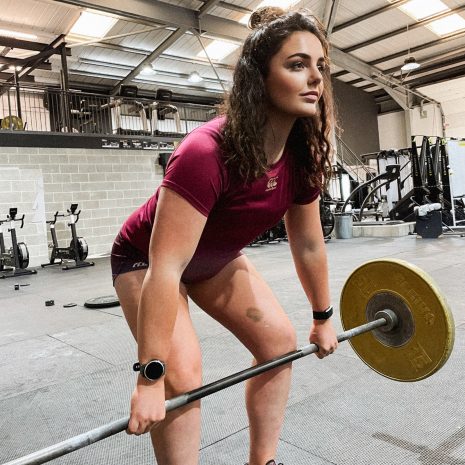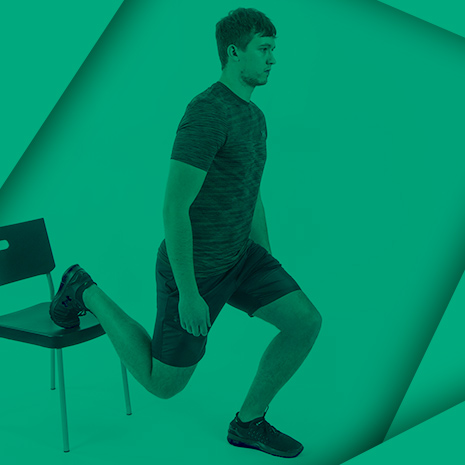The team at rugbystore has teamed up with esteemed Chartered Physiotherapist, Neil Aitken to give you high-quality information on the most common Rugby injuries and how to best recover from them. If there’s a particular injury you’d like us to cover with Neil’s help, get in touch with us on social media (Facebook | Twitter).
Quick links
- What are the hamstring muscles?
- What do hamstring muscles do?
- What causes hamstring tightness?
- What is hamstring tendinopathy?
- Causes of hamstring pain at the glutes
- Causes of hamstring pain at the knee
- Hamstring injury causes
- Hamstring injury recovery time
Hamstrings play a very complicated role in the action of running, which makes them extremely prone to injury. Because of this, hamstring-related injuries are one of the most common problems experienced by sports people. In this article, we answer some of the most commonly asked questions people have after sustaining a hamstring injury. If you are looking for more detailed information on hamstring injuries and how to recover from them, check out our Comprehensive Recovery Guide for Hamstring Injuries.
What Are The Hamstring Muscles?

- A group of three muscles:
- Semitendinosus
- Semimembranosus
- Biceps Femoris
What Do Hamstring Muscles Do?
- They bend the knee and extend the hip. Functionally, the hamstring muscle complex has three basic roles with running:
- Slowing the striding leg down as it approaches the ground
- Extending the hip and propulsion of the body forward
- Assisting the calf muscle as it helps to move the knee.
- They have to work both concentrically (shorten) and eccentrically (lengthen) at various times when running.
What Causes Hamstring Tightness?
- Sitting puts the hamstrings in a shortened position which can cause tightness over time. The hamstrings also have to produce large amounts of force which can shorten the muscle over time.
What Is Hamstring Tendinopathy?
- Hamstring tendinopathy used to be categorised as a form of tendonitis, which implies an inflammatory condition. However research has shown that there is no sign of inflammation within an affected tendon. These conditions are now called tendinopathies. The collagen tissue within the tendon degrades and produces pain. Research shows that to treat a tendinopathy, the tendon must be put under load, particularly eccentric loading. This involves the muscle and tendon working as the muscle lengthens. An example of this for the hamstrings is a Nordic curl.
Causes Of Hamstring Pain At The Glutes
- Hamstring pain at the glutes can be due to a tendinopathy of the common origin of the three hamstring muscles. They all form into one tendon which inserts onto the pelvis.
Causes Of Hamstring Pain At The Knee
- If the pain is on the inside of the knee, it can be a tendinopathy of semitendinosus or semimembranosus (2 of the 3 muscles of the hamstring group). If it is the outside of the knee, it could be a biceps femoris (another muscle in the hamstring group) tendinopathy.
Hamstring Injury Causes
- Studies have shown that the hamstring muscle group reaches peak elongation and is most active during the late swing through the mid-stance phase of running. Thus, the hamstrings reach their maximum length while attempting to forcefully work eccentrically and switch functions to immediately produce a concentric contraction, which makes the terminal part of swing phase the most vulnerable for injury.
Hamstring Injury Recovery Time
- For minor hamstring strains, recvoery time can be 3-6 weeks. For more severe hamstring injuries recovery time could be 6-12 weeks. For more information on how to recover from hamstring injuries, check out our Guide to Recovering from Hamstring Injuries.
About the author
Neil Aitken is a Chartered Physiotherapist with a private clinic in Edinburgh. He has previous experience as a senior physiotherapist in the NHS and provided physio for one of the top amateur rugby teams in Scotland. He is highly evidence-based having completed a Post Grad in Musculoskeletal Physiotherapy gaining membership to the MACP, one of the most highly respected qualifications within physiotherapy.
Website: http://www.neilaitkenphysio.co.uk/
Facebook: https://www.facebook.com/neilaitkenphysio/
Twitter: @aitkenphysio

Please note, this article is intended to serve as a guide for general information only. Injuries should be assessed by a qualified specialist such as a physiotherapist or doctor. When you sustain an injury, there are always complicating factors that may need to be assessed and addressed by a professional.




Comments